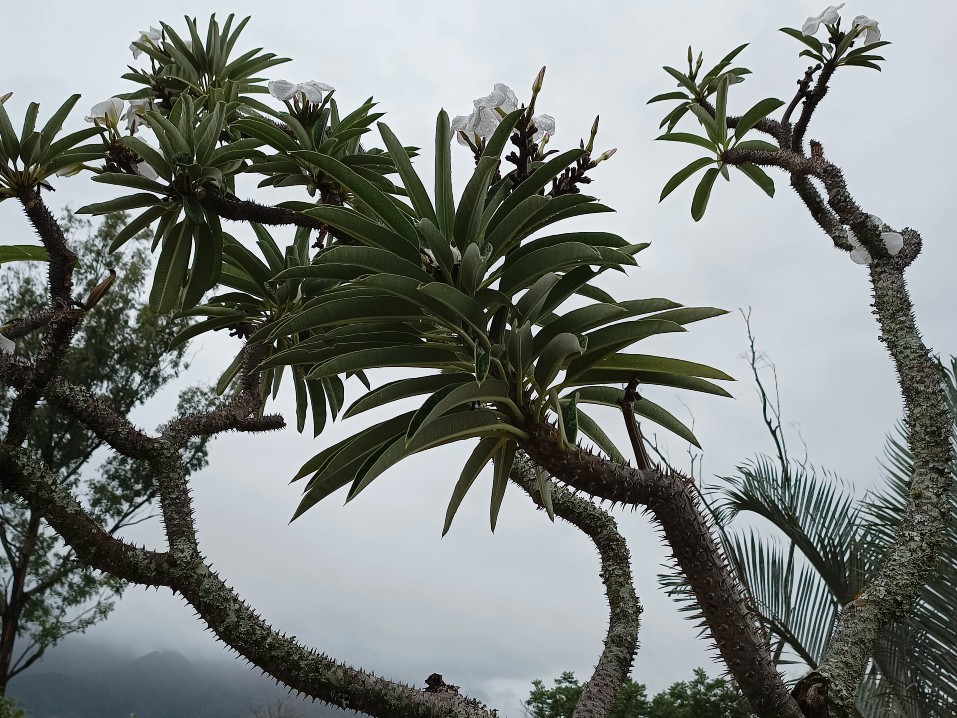mora mora - a taxi-brousse trilogy
ep. 2
goats on the roof
- Route: Ambatoabo > Taolagnaro
-
Distance: 84km
-
Duration: 2 hours 40 minutes
-
Goats: at least 15

Andohahela National Park is a 760-sq-km expanse of rainforest in South-Eastern Madagascar. Known for its high rate of endemism1, 95% of its plant species are unique to the area and not found anywhere else on the planet. The vegetation’s plentiful, peculiar adaptations to harsh, wet and semi-arid conditions earn the park its name, Spiny Forest.
*
Completely absent from other visitors, my guide Raha and I venture undisturbed into the queer embrace of this strange terrain. I gawk at the voluptuous array of trees, shrubs and flowers erupting in alien forms I’d never seen before. Baobabs and orchids were among the extraterrestrial extravaganza of spiky, bulbous plant creatures dancing vibrantly in the humid air, filling me with their ethereal vibrancy like an otherworldly feast. As we descend into the valley, the gentle pulse of the forest is subsumed by the eruptive force of a gushing river, bearing the cumulative power of the rainy season just gone. I felt I was bearing witness to another planet. As night folded its cosmic ink into the pinkish dusk I watched the stars come alive in a peaceful stillness increasingly bestowed only on protected lands.


*
Raha and I made the 8-km pilgrimage back to the nearest road. From there, we would wait (potentially hours) for a taxi-brousse to drive by and take us back to the coastal city of Taolagnaro. Instead, with barely enough time to put my shoes back on after crossing the final brook, Raha called to me from ahead as he flagged down a passing bus.
I ran to meet him, realising quickly – and to my great discomfort – that the entire bus was laden with goats, hoofs bound together and strapped to the roof. They were strategically top-and-tailed to maximise the goat-to-square-foot ratio, almost making a double layer. I carefully stepped over another goat in the footwell as I boarded the back row.We set off and I flinched as the cargo directly above me bleated violently, saliva landing on my arm through the open window. I settled (already unsettled) into my seat and tried to make peace with the fact that I would likely spend the next few hours confronting things that I – a non-meat eater for over half of my life – avidly avoided.
As the taxi-b rattled down the dirt track roads, it became clear that I was alone in my agitation. Due to the lack of infrastructure that might lend access to refrigerating capabilities, livestock is kept alive for as long as possible to ensure freshness and avoid the health hazards of meat spoilage. We stop for snacks, vendors rushing to the windows with offerings of smoked fish, steamed pork, chicken wings, fruits… I am in my own personal hellscape: the physical manifestation of the mass cognitive dissonance whereby animals are not acknowledged as fellow, sentient creatures deserving of life and – failing that – dignity.


Having been in Madagascar over a month, I was not oblivious to the visceral applications of this farm-to-table culture. In many parts of the world, bringing home dinner meant picking a chicken out of a cage and strapping it to the back of your moped, its head bobbing helplessly over the exhaust pipe, as you drive home from work. I’d mistakenly ventured down one-too-many livestock zones at street markets and was perennially uneasy witnessing the commodification of live creatures, manhandled like a can of tomatoes in a shopping basket. Livestock here is openly treated as if it were already the meat on your plate, whereas in Western cultures, this process is much the same but carefully concealed behind the tall gates of industrialised megafarms (the scale is also larger, with Brits eating up to 600% more meat than the Malagasy2). I felt a certain respect for the transparency I witnessed here; I’ve always thought that the most sustainable and morally defensible way of consuming meat is to kill what you eat.
The goats’ cries merged with those of infants, intensifying in pitch and urgency at sharp pot holes or when the bus stopped and the breeze ceased to ameliorate the scorching midday heat collecting on the roof. Failing to distract myself, I wondered how tight their rope bindings were and whether they were scared enough to soil themselves… or perhaps they had been starved in advance of the journey to avoid that particular eventuality. Feeling their fear, I closed my eyes and tried to teleport.

1. Endemism is the state of a species only being found in a single defined zone and do not arise naturally outside of that geographical context.
2. Meat consumption measured by carcass mass availability per persons in a given country. Data Source: Food & Agriculture Organisation of the United Nations (2021)
